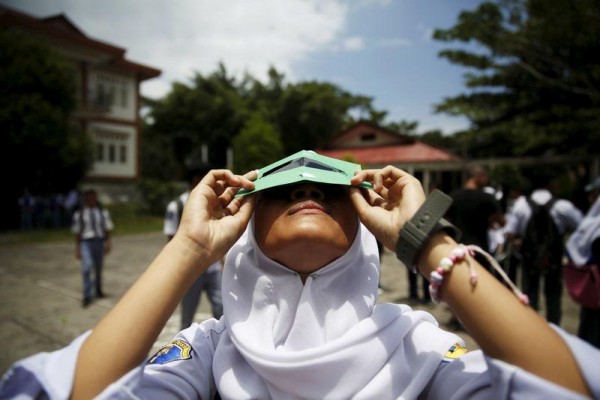By Lynn Palec, | March 11, 2016

Photos of the total solar eclipse that took place on March 9 were dubbed by many scientists as a “Black Hole in the Sky” due to their varied and beautiful images that highlighted the many faces of the rare celestial event.
Photos of the total solar eclipse that took place on March 9 were dubbed by many scientists as a "Black Hole in the Sky" due to their varied and beautiful images that highlighted the many faces of the rare celestial event.
The solar eclipse was visible from Indonesia and across several parts of Southeast Asia where scientists, experts and eclipse enthusiasts flock in order to bear witness to the rare cosmic event.
Like Us on Facebook
Scientists from the National Aeronautics and Space Administration tracked the solar eclipse from Micronesia. The team that tracked it managed to capture stunning video footages of the moon blocking out the rays of the sun.
One of the eclipse chaser was veteran astrophotographer Justin Ng who hails from Singapore. He was able to take magnificent stills of the total solar eclipse while he was in Palu, Indonesia, one of the best spots to witness the event.
In an email sent to Space, Ng said, "Moments before the totality, ic ould feel the drastic change in temperature (it became cooler), and my guess would be at least a 5-7 degree Celsius difference. During the totality, the scene turned darker, and I was able to see the sun's corona with my eyes! It's akin to seeing a 'black hole' in the sky, and everything was so surreal and unbelievable."
The last time a total solar eclipse occurred over Indonesia was in 1988. During the recent total solar eclipse, the cosmic event was spoiled by cloudy skies in some parts of Indonesia. In the Sumatran city of Palembang, thousands of spectators took a break from their daily routine in order to witness the rare cosmic event.
Unfortunately, due to cloudy skies, the eclipse was only visible for a brief period of time but it was glorious for those who patiently waited, especially to the younger generations.
While Palembang was fortunate enough to gaze, even for a brief moment, to the eclipse, some were not that fortunate at all. Kalimantan was one of the few places that was spoiled by rain showers and disappointed would-be spectators.
The next total eclipse will take place in August 2017 and will be fully visible in over half of North America, according to The Telegraph.
-
Use of Coronavirus Pandemic Drones Raises Privacy Concerns: Drones Spread Fear, Local Officials Say

-
Coronavirus Hampers The Delivery Of Lockheed Martin F-35 Stealth Fighters For 2020

-
Instagram Speeds Up Plans to Add Account Memorialization Feature Due to COVID-19 Deaths

-
NASA: Perseverance Plans to Bring 'Mars Rock' to Earth in 2031

-
600 Dead And 3,000 In The Hospital as Iranians Believed Drinking High-Concentrations of Alcohol Can Cure The Coronavirus

-
600 Dead And 3,000 In The Hospital as Iranians Believed Drinking High-Concentrations of Alcohol Can Cure The Coronavirus

-
COVID-19: Doctors, Nurses Use Virtual Reality to Learn New Skills in Treating Coronavirus Patients











